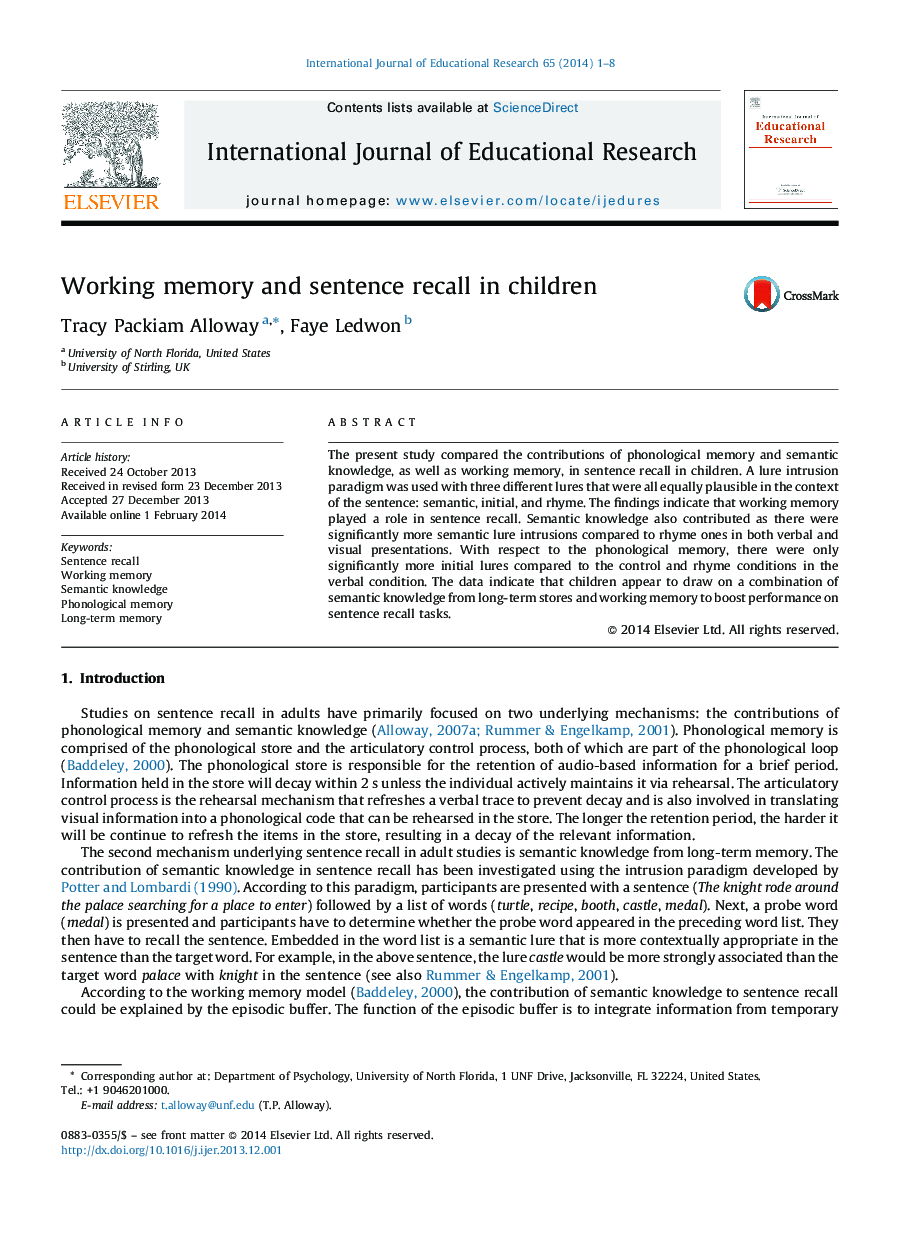| Article ID | Journal | Published Year | Pages | File Type |
|---|---|---|---|---|
| 356935 | International Journal of Educational Research | 2014 | 8 Pages |
•Working memory plays a role in sentence recall.•Semantic knowledge also contributes to both verbal and visual sentence recall.•Phonological memory drives word beginning, not ending, distraction in verbal recall.•Children draw on semantic knowledge plus working memory for sentence recall tasks.
The present study compared the contributions of phonological memory and semantic knowledge, as well as working memory, in sentence recall in children. A lure intrusion paradigm was used with three different lures that were all equally plausible in the context of the sentence: semantic, initial, and rhyme. The findings indicate that working memory played a role in sentence recall. Semantic knowledge also contributed as there were significantly more semantic lure intrusions compared to rhyme ones in both verbal and visual presentations. With respect to the phonological memory, there were only significantly more initial lures compared to the control and rhyme conditions in the verbal condition. The data indicate that children appear to draw on a combination of semantic knowledge from long-term stores and working memory to boost performance on sentence recall tasks.
